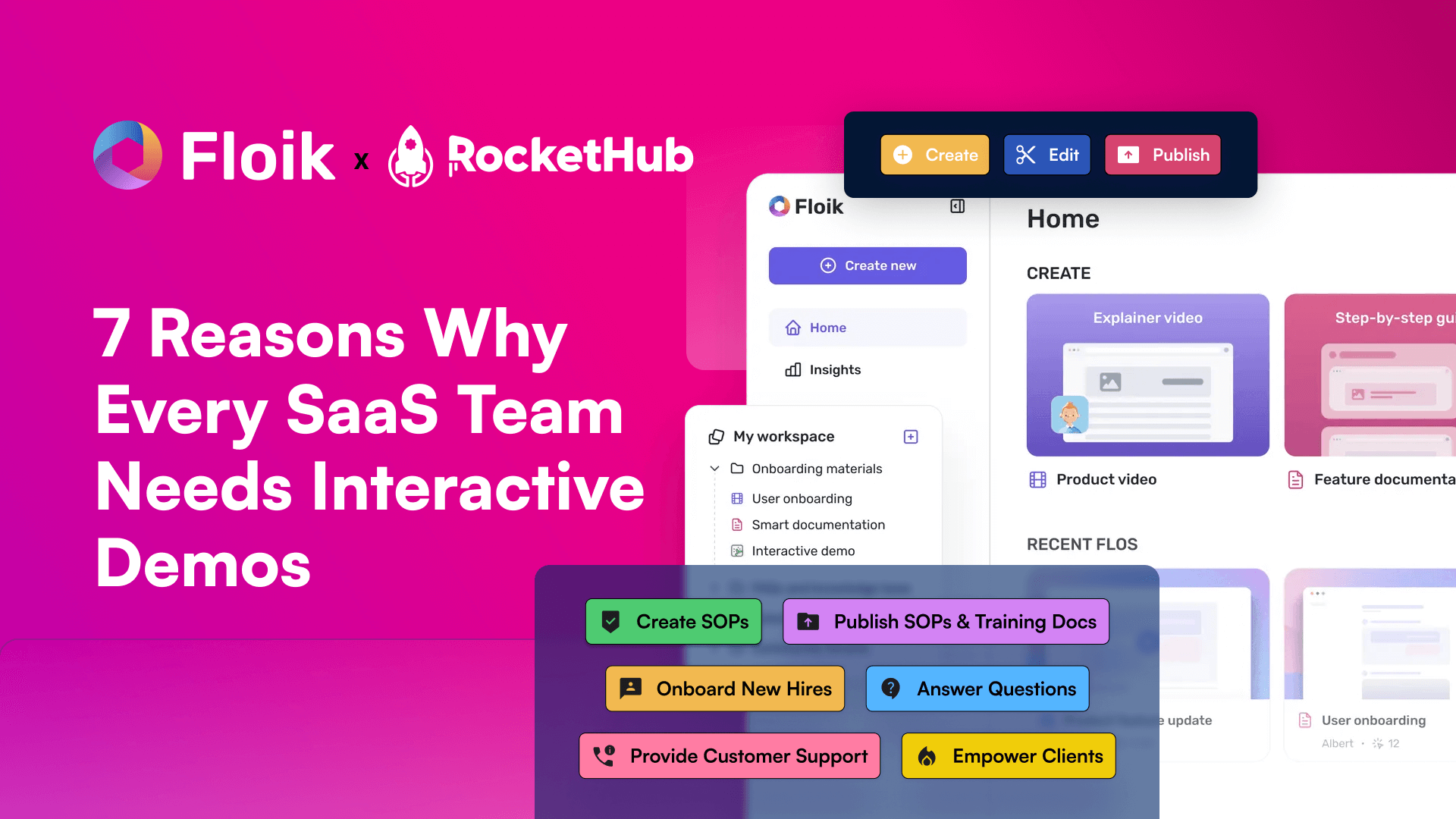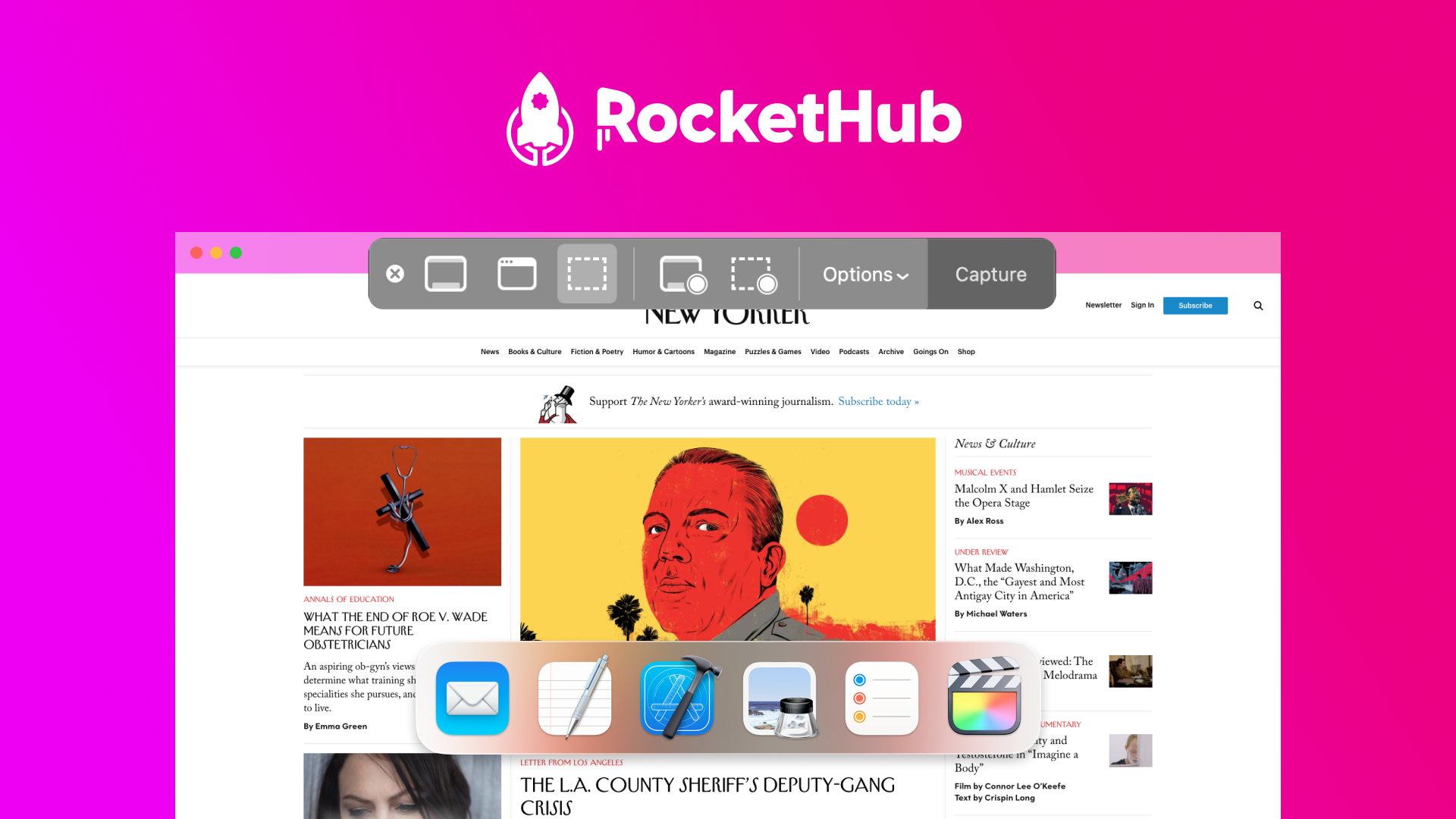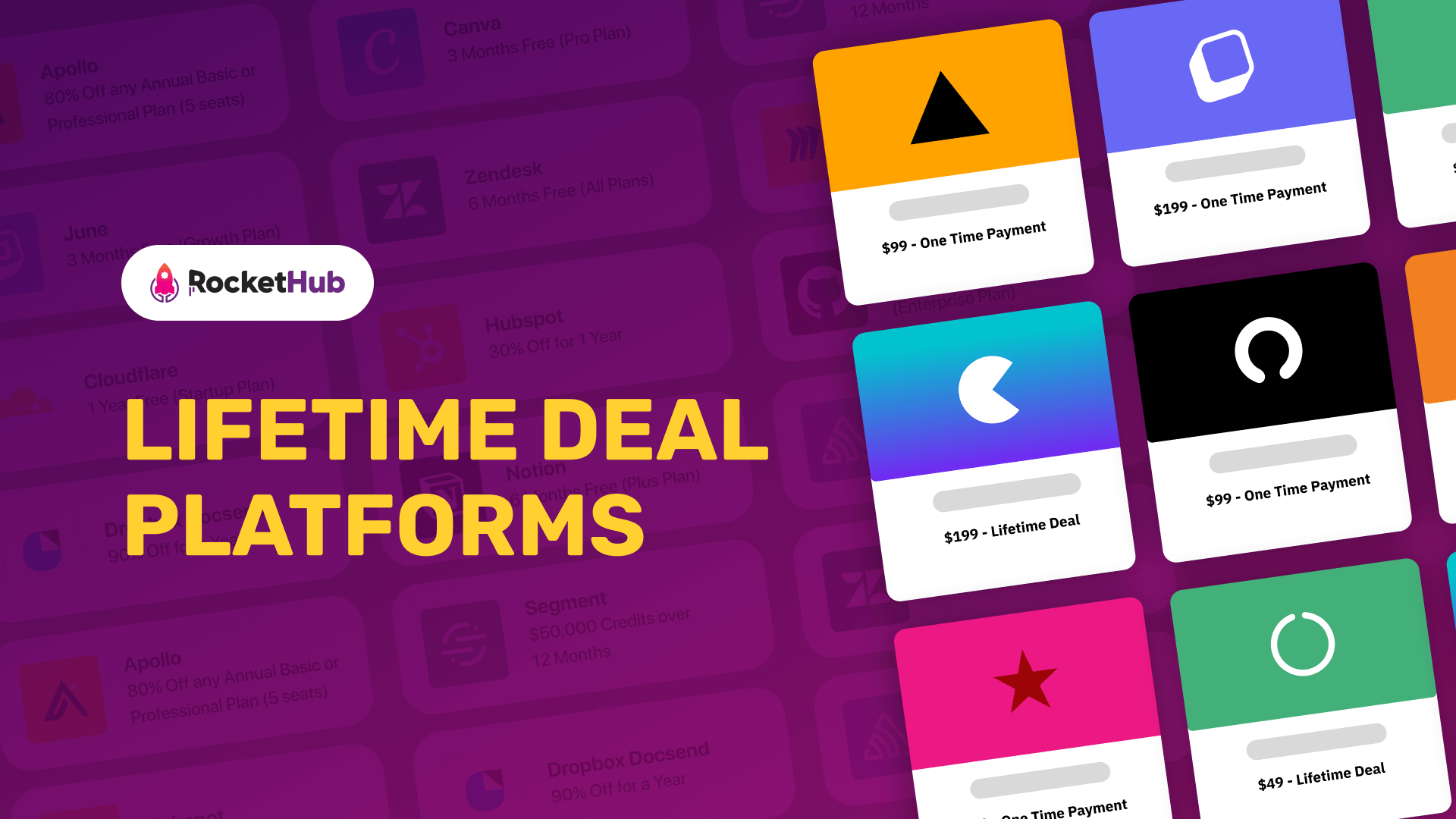
How to Create a SaaS Blogging Strategy
- RocketHub Team
- November 9, 2021

If you’re looking for creative and cost-effective ways to boost your marketing efforts as a SaaS startup, having a solid blogging strategy is a great first step. Blogging, when done correctly, can help increase your brand’s awareness, establish your company as the voice of authority in your industry, and help build long-lasting relationships with your customers. When it comes to creating a blogging strategy for SaaS businesses, there’s often some confusion about what exactly you should blog about, how often, and how to drive traffic to your blog. This is why starting with strategy rather than simply putting out content at random is so important.
In this article, we’ll cover insights and advice on how to create a blogging strategy for your SaaS startup.
Why Create a SaaS Blogging Strategy Startup
As a SaaS startup, you want to offer your customers value and establish trust. Blogging is one of the best tools to achieve it. It allows you to educate, inform, and, in some cases, entertain your customers. It also helps them solve their problems, and keep them engaged with your brand. When you’re creating your blogging strategy for SaaS, keep these points in mind and think about your customers’ pain points rather than yourself.
Let’s say you offer video editing software for busy marketers. Instead of boasting about the benefits of your app or focusing on direct-response promos, identify what issues your customers are facing. Help them overcome those obstacles. In the case of video editing software, perhaps your customers are pressed for time and need a quick, easy-to-use solution for their video editing needs. Instead of directly promoting your app, offer them insightful, actionable tips on how to edit videos. Other tips that might work are how to save time when exporting video files, or how to write better video scripts for faster turnaround. In other words, be the voice of expertise and advice. You will steadily build an interested, engaged audience that will start converting.
Ready to take on the world? Let’s take a deeper look into creating an effective blogging strategy for SaaS.
Determine Your Blogging Goals
Clearly defining your blogging goals is the crucial first step when building your strategy. Without being crystal clear about what you want to achieve, your blogging strategy will be inconsistent and ineffective. As a result, it will not yield the results you’re hoping for. As a SaaS business, you are offering a certain solution for a certain problem; your goal is to educate and engage your audience in meaningful ways to help them solve their pain points.
A lot of companies make the mistake of blogging just for the sake of blogging. They know they need an online presence, but without a solid blogging strategy, they end up posting random content or simply rehashing ads and product descriptions over and over again. Don’t go down that road – it leads to a disinterested audience and few leads.
Instead, create a strategy that:
- Enable you to deliver highly targeted, valuable, and engaging content
- Make sure your content helps your customers solve their issues
- Help your customers save their time
- Offer new and effective ways to get rid of their most pressing pain points
Ways to Achieve Your Blogging Goals
To achieve this, think of your blogging goals from the perspective of your potential customer rather than yourself. Here are some points to consider:
- What do your customers care about?
- The topics they discuss on social media
- Challenges are they facing
- What sort of information would help them the most?
Going back to the video editing software example. A good blogging strategy would help you to defining some points:
- Who your audience is
- Their pain points
- Free, valuable content that would enable them to solve their problems
This is a simple example. However, it should give you an idea of how to set realistic, result-driven blogging goals for your own SaaS startup. Once you have a good blogging strategy for SaaS in place, it’s time to take another important step
Define the Company’s Voice, Tone, and Personality
Now that you’ve defined essential blogging goals, it’s time to make sure you’re creating content that will help you reach those results. For this, it’s key to define your company’s voice, tone, and personality. Here are some questions to consider:
- How do you want to come across as a brand?
- What sort of language your customers are most receptive to?
- Are you going to be strictly professional, delivering key information in a formal, journalism-style format?
- Are you going to employ a casual, friendly tone? Or are you looking to stand out by creating quirky, informative-but-entertaining content?
Clearly defining the brand’s voice and personality will help you stay consistent in your blogging. Also, it will help you to attract a certain type of audience. If you’re targeting professional accountants in their forties and fifties looking for no-nonsense, data-driven content, staying professional and delivering well-researched information will be your best bet. On the other hand, if you’ve created a photo editing app for young millennials, using a more casual, friendly, and fun voice will work better.
Your company’s voice, tone, and personality will also help define the types of blog posts you create. White papers, infographics, bullet-point lists, and ebooks are usually appreciated by busy professionals looking for reliable information sound bites backed up by well-researched data. In addition, this type of content helps establish your SaaS company as the voice of expertise and authority in your industry or niche. Videos and podcasts, on the other hand, can serve both as solid, informational pieces of content and be entertaining, fun, and engaging at the same time.
Once you’ve defined your tone, it’s important to stick to it and stay consistent in every single piece of content you produce. Jumping from formal to quirky or from casual to somber is going to put your audience off and give your blog an erratic, scattered feel. Staying in character and being consistent with your personality and voice is essential for a successful blogging strategy long-term.
Steps to Create a SaaS Blogging Strategy
Now, you’ve defined your goals and decided on what type of content you aim to create and what kind of tone you’ll be using. It’s time to get into the nitty-gritty of creating a detailed blogging strategy and content plan to execute. Always remind yourself that you’re blogging to offer value to your customers rather than plainly advertise your product. Take these steps to strategically create, plan, and distribute your blog content.
Research Keywords to Increase Visibility
No blogging strategy for SaaS will be successful without careful SEO (Search Engine Optimization) practices. Do in-depth keyword research using tools like Moz or SemRush. Identify what your customers are searching for online. Then, you can create several batches of relevant keywords to include in each of your blog posts or other content pieces. It’s no longer enough to have a few generic keywords and use them over and over again. Instead, create sets of highly targeted, long-tailed keywords for each blog piece and use them strategically to drive traffic to your website. Make sure that your blog posts answer your customers’ questions in-depth and are well-researched. Once again, generic, superficial content just isn’t going to cut it anymore.
Let’s go back to the video editing software company example. Let’s say you want to create a series of blog posts helping your customers solve their pain points. Instead of hammering out a few generic blog posts with keywords like “video editing”, produce content that answers “how-type-of-questions”. This way, you will be targeting a very specific question that a very specific set of people have and, if your content is truly stellar, you will soon begin building a loyal, engaged audience.
If doing in-depth keyword research sounds too complicated, outsource it to an SEO company or specialist. They can help you define the best keywords for your content. Whether you do it yourself or enlist some help – don’t skip this step! Even if you create amazing blog posts, they won’t make much of a difference if nobody sees them.
Identify Your Target Audience and Their Needs
Speaking of audiences: this step is crucial in making sure your blogging strategy works. Always put your audience first. Focus on their needs and pain points – otherwise, your blogging efforts will not have the effect you’re hoping for.
First, identify your audience using online tools. Take a look at online reviews in your industry or niche. Try to join social media groups discussing services or products similar to yours. You can also look at your existing data (existing customers and your website traffic demographics). Then, create audience personas: identify what your ideal customer is like in terms of age, interests, location, and occupation.
Think about who is the most likely to benefit from your software. Create several customer profiles that fit the bill. For example, like a video editing software company, your audience persona could be 32-year-old NYC-based marketing or advertising creative. Once you’ve created the audience persona, figure out what it is they care about and search for online. Run long-tail keyword research that a young New York marketing professional would run. Make sure to include terms like video editing for TikTok, best app for creating reels, or YouTube video techniques.
Another good way of identifying your target audience is simply asking. Post social media content ending with questions and nudges to comment. Ask your existing customers for reviews and opinions and join LinkedIn or Facebook groups discussing your specific industry or niche. Keeping on the pulse of what your audience finds relevant is key to offering them value and building trust; otherwise, you’re just talking to yourself.
Create a Content Calendar With Topics to Cover in Advance
Few things are worse than producing blog content at random or playing the catch-up game. It just never ends well and causes frustration for both you, the content creator, and your audience. To avoid the rookie mistake of infrequent, inconsistent posting, create a well-planned content calendar with topics and keyword sets to cover in advance. Then, create and schedule posts at least several weeks in advance to make sure your blogging is consistent.
One of the simplest ways of creating a content calendar is taking a 3-month period and breaking it up into weeks or days (depending on how often you plan to post). After that, assign a specific blog topic for the week or day. You can also batch content by creating weekly or monthly themes. For example, during Week 1, you may want to be talking about phone video editing solutions, and during Week 2, you want to offer some online video editing tips. Now that you have themed weeks, break down the content to cover specific topics for each week.
Another alternative is to create a content calendar according to the keyword sets you’re going to use. You may want to alternate your blog content between posts with highly targeted, long-tail keywords and shorter pieces offering some more general advice, or the other way round.
When creating your blog calendar, don’t forget to define whether all your posts are going to have the same format and length or whether you’re planning to switch it up and introduce different, short-form content (let’s say, an Infographic Monday or Bullet Point Afternoon) to offer your audience more diverse content.
The key is to stay consistent. Once you’ve created your content calendar, stick to it religiously and post on a regular basis. Irregular posting scatters attention and sends a message that you simply cannot be relied upon – and it’s the exact opposite of what you’re trying to achieve with your blogging strategy.
Use Social Media Channels to Promote Blog Posts and Drive Traffic
Your blogging strategy for SaaS is in place. You’ve dialed in your company’s voice and personality, defined your audience, created a solid content calendar, and published your content. Is it time to sit back and relax? Not just yet: to promote your blog posts and drive traffic to your site, you’ll need to do some legwork to make sure your content is seen.
Social media channels are excellent for promoting your blog content and directing traffic back to your website. However, you’ll need to be strategic here, too: simply posting links to your blog post isn’t enough. When promoting your posts on Facebook and LinkedIn, create captivating captions or short summaries of your post to draw the audience in and make them click the link. Use intriguing headlines, pose a question your audience care about, or promise to deliver some relevant industry news or data to hook people and encourage them to click and read your blog post.
If you’re promoting your blog post on Instagram, remember that links in the captions are not clickable and your best bet is to either include the link to the post in bio or use the “swipe up” function in your Instagram stories. As with other social media platforms, create an engaging caption to encourage people to read the post you’re promoting. Utilizing relevant hashtags may also help boost the visibility of your post and, subsequently, clicks on your blog link.
Which platform is the best to promote?
Being the biggest search engine after Google, YouTube is a fantastic platform to promote your blog content. You can create short videos summarizing your blog post and include the link to the full article in the video description below. You can also repurpose your older YouTube content to direct traffic to the blog – the possibilities are limitless. However, as with Facebook, LinkedIn, Twitter, and Instagram make sure you aren’t just posting a generic video intro and a link. Instead, create a hook to inspire interest and make people click and read your blog post.
Finally, make sure your content is shareable. Creating engaging, interesting headlines and choosing intriguing featured images all contribute to your post getting shares, retweets, and cross-posts. The more attractive, engaging, and interesting your content is, the more likely it is to get shared and discussed organically.
Conclusion
Building a successful blog for your SaaS startup can be a game-changer in your overall marketing and advertising efforts. A solid, effective blogging strategy, in-depth research, and quality content creation can help you build a large, loyal tribe of interested and engaged customers who value your expertise, advice, and information you put out on a regular basis. As long as you remember to put your audience’s interests and needs first, you’re on the path to nail blogging strategy for SaaS and start seeing long-term results.
Share This Post
RocketHub Team
The launch crew at RocketHub writes about startup and SaaS growth. Be a fellow Rocketeer and show some love by commenting below with your thoughts on our content.
Table of Contents
Get The Latest Updates
Subscribe To Our Weekly Newsletter
Sign up below to be one of the first crew members onboard and get early access to amazing deals.
Recent Posts


Social Media
Categories
Related Posts
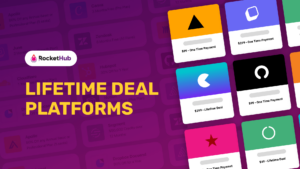
Lifetime Deal Platforms
The best lifetime deal platforms for software. Platforms lik RocketHub scour the web for the highest quality products to bring buyers the best lifetime deals on their platform.

How to Work for Yourself + 13 Solo Business Ideas
Do you ever wonder if being your own boss could truly set you free? In this article, we’ll explore the theory that unleashing entrepreneurial freedom
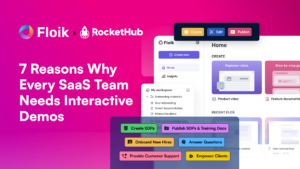
7 Reasons Why Every SaaS Team Needs Interactive Demos
Making a Case for Interactive Demos: 7 Reasons Why Every SaaS Team Needs Them Let me paint a scenario for you. You want to buy

